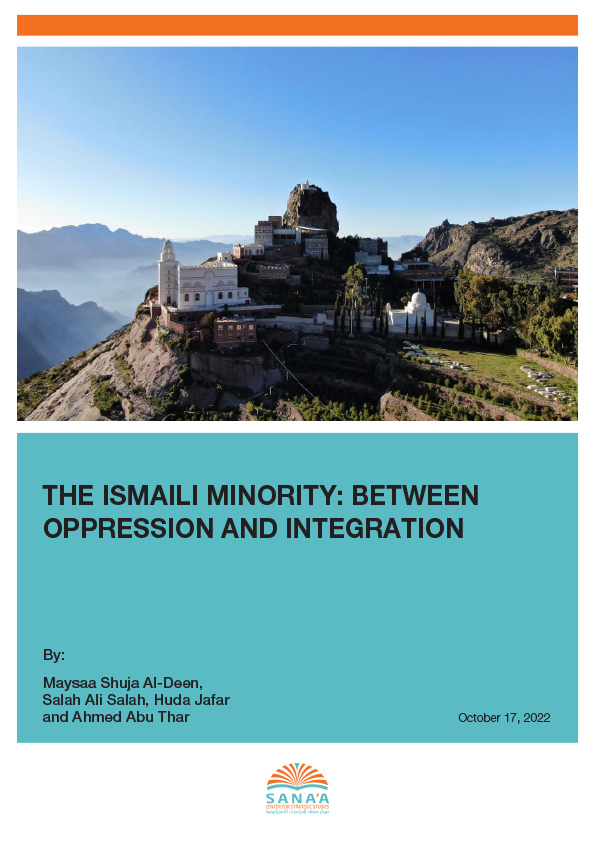Executive Summary
Ismailis are the second biggest Shia community worldwide after the Twelver Shia, but while in Yemen they are outnumbered by both Sunnis and Zaidi Shia they have deep historical roots in the country going back over 1,000 years. Living mainly in the northern Haraz mountains and Aden in the south, Yemen’s Ismaili minority hails from the Tayyibi Mustaʿli branch of Yemen and India, which is outnumbered globally by the more numerous Nizari Ismailis. Both branches of Ismailism have their origin in disputes over leadership and doctrine during the Fatimid caliphate that ruled from Egypt between 969 and 1171 CE.
Although Ismailis in Yemen flourished during the Fatimid era, they later suffered heavily during the Zaidi Imamate. The 1962 republican revolution was a turning point for Ismailis in the north, ending persecution but not the negative stereotypes surrounding them in Yemeni society. Today they are on good terms with the Houthi authorities in Sana’a but the situation is markedly different in Aden, where many Ismailis of Yemeni origin returned from India to settle during the era of the British colony (1839-1967).
When war erupted in 2015, Salafi groups – whose influence had grown in Yemen since the 1990s – accused the Ismailis of siding with the Houthis as fellow Shia Muslims. After Houthi forces were expelled from Aden, Salafis began to target the Shia community, including Ismailis, destroying a mosque and causing Ismailis to move to other neighborhoods or quit Aden altogether. Despite this, Ismailis are active today in the Yemeni economy, mostly working in the private sector. They have led an initiative to replace qat plantations with coffee, a project that has made great progress in Haraz.
This paper outlines the history of the Ismaili community and its current problems to make a series of recommendations aimed at reintegrating them into society. State education should highlight their distinctive contributions to Yemen’s history, culture and economy in an effort to combat historical prejudice and stereotypes. Legal measures could be taken to prevent hate speech and incitement, and Ismailis should be given access to sealed religious manuscripts held at the Great Mosque in Sana’a. The internationally recognized government – which is based in Aden – must guarantee their safety, allowing Ismailis to return to their communities and rebuild their mosques. Finally, the government and its international supporters should view the Ismaili question as a model for the broader issue of how minorities are treated in Yemen when the current conflict is resolved.
This report is part of a series of publications, produced by the Sana’a Center and funded by the Government of the Kingdom of Sweden, examining minority communities in Yemen.

 اقرأ المحتوى باللغة العربية
اقرأ المحتوى باللغة العربية


